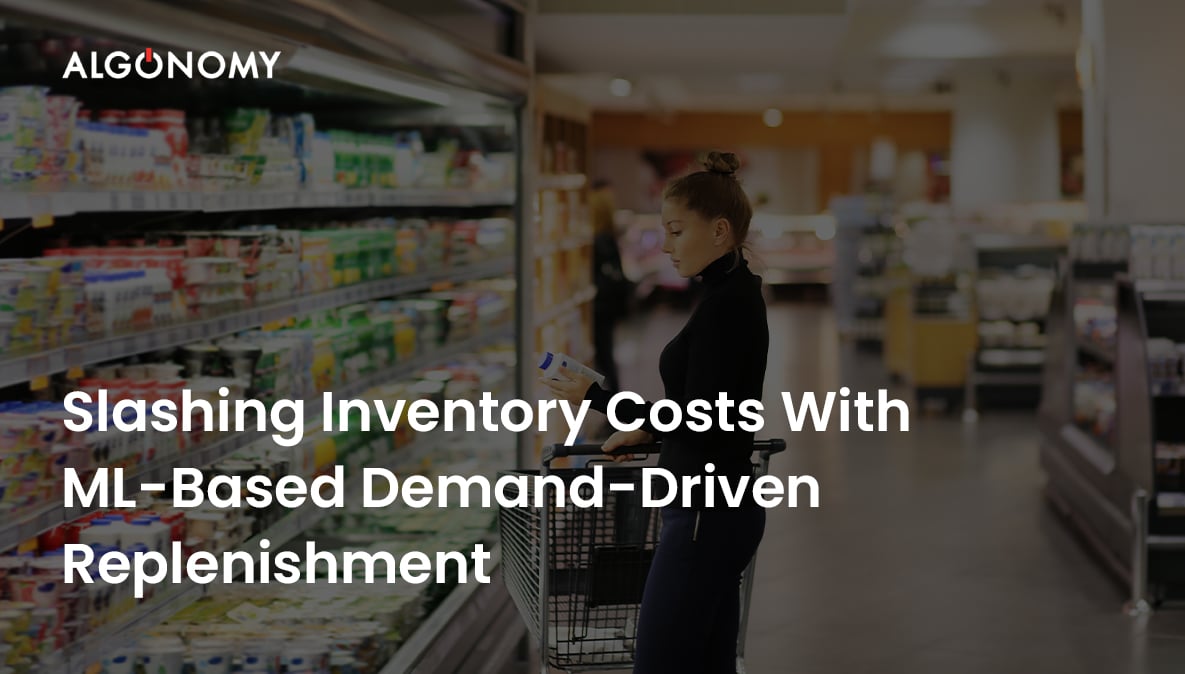Poor cash flow, pressure from suppliers, locked-in capital, and high wastage – the list of disadvantages of poor replenishment can go on very long to become every retailer’s nightmare. Seasonality, multi-variate demand planning, multi-echelon inventories, inter-SKU effects, and lack of visibility over the supply side all can lead to an inventory fiasco that can erode capital at rocket speed. What makes the situation even scarier is the fact that carrying too much inventory spurs equally costly secondary challenges, like excessive obsolescence, pilferage, and ad-hoc expenses like maintenance, taxes, insurance, marketing, and more.
Stats reveal that the US retailers have $1.40 of inventory in stock for every dollar they make. Further, the annual additional cost of holding excess inventory ranges between 25% and 32%. Holding excess inventory directly leads to excessive debt servicing and lower gross margins, both of which inflate operational costs and degrade profitability. As tough as it might sound, taming the behemoth is just like dealing with a snowball – tackle it before it becomes too big!
Automation-powered accurate forecasting coupled with ML algorithms tuned to the retail nuances down to the product location level can reduce inventory distortions, stock issues, inventory investments, and wastage while improving inventory turnover, customer satisfaction, and shelf availability. Let’s examine how this happens, and how every retailer can make the most of it.
1. Automate Forecasting
Static demand planning and manual forecasting adjustments based on hunches or random variances can skew the inventory replenishment from the actual demand and fail to adapt to demand fluctuations. They have no room for anticipating, predicting, and aligning to supply chain disruptions, leading to bloated inventory, stock issues, and capital lock-ins.
On the other hand, intelligent demand forecasting solutions generate demand forecasts based on exhaustive data processing and analytics while factoring in significant & influential factors and the magnitude of their effects on AI.
They streamline supplier communication and collaboration, leading to smoother order fulfillment and reduced lead times. Studies reveal that AI-powered forecasting can reduce supply chain errors by 30 to 50%, shrinking lost sales by 65% and warehousing costs by 10 to 40%.
2. Inventory Replenishment Built on Top of Accurate Forecasting
It is important to understand inventory success as a cumulative result of multiple factors – replenishment built on top of accurate forecasting stemming from exhaustive, intelligent, and ML-powered data analytics and visualization. Achieving this is next to impossible with legacy models where retail data is siloed and every component works disparately.
AI/ML-based forecasting facilitates data-driven replenishment planning decisions in real-time by factoring in external as well as internal factors, which can directly slash stockouts, 70-90% of which are caused by poor stock replenishment. However, OOS management is not the only benefit.
Adaptive self-learning models can easily optimize replenishment plans by modeling variations in lead times, fill rates, and pending orders, which empowers retailers to adapt to supply chain disruptions. Further, they can plan for store-level as well as warehouse-level trends while incorporating a diverse set of constraints for each one of them, thereby unlocking accuracy at the hyperlocal level.
3. Incorporate Diverse Sales Influencers
Annually, $163 billion worth of inventory is discarded due to oversupply and damage. Further, retailers in the US alone lost a staggering USD 82 billion because of out-of-stock items. Failing to understand, identify, and adjust inventory plans to diverse sales influencers, such as weather, lead times, seasonality, storage capacity, microtrends, sales, etc., can directly impact sales contributing to markdowns, wastage, and customer loss.
ML-powered replenishment planning solution coupled with AI-driven forecasting leverages intelligent algorithms for diverse scenario modeling, allowing best-fit selection and tuning replenishment as per multiple sales influencers. Thus, retailers can optimize inventory from a single integrated interface and create dynamic order plans.
4. Capture Cannibalization
Events like sales, discounts, promotions, and new product introductions can cause sudden dips or spikes in certain product categories, or SKUs, causing adverse effects on sales and profits. Manual management in such cases comes with more ramifications as it is highly subjective and vulnerable to bias.
On the other hand, ML-driven replenishment solutions can effectively handle in-store product cannibalization. They can dynamically balance demand among products or competing SKUs, considering promotions and availability. Intelligent scenario modeling allows retailers to introduce new products with minimal distortions of effects on existing or incoming inventory.
Further, retailers can automatically adjust replenishment levels up or down to align with the shifting market, thereby keeping the profitability and sales intact. They can effectively optimize multi-echelon inventory across the entire supply chain and unlock greater savings, reduced inventory costs, and higher availability.
Investing in AI/ML-powered replenishment planning solutions comes with multiple benefits, including predictive alerts for days of stock, potential supply chain disruptions, and stock-related events. Such smart capabilities arm the retailers with the right arsenal to keep on catering to the volatile customer sentiments without ballooning inventory or having empty shelves, which paves the way for sustainable business growth and customer loyalty.
 in Sweden from 7 - 8 October 2025. Pre-book a meeting to connect with our
product experts.
in Sweden from 7 - 8 October 2025. Pre-book a meeting to connect with our
product experts.










